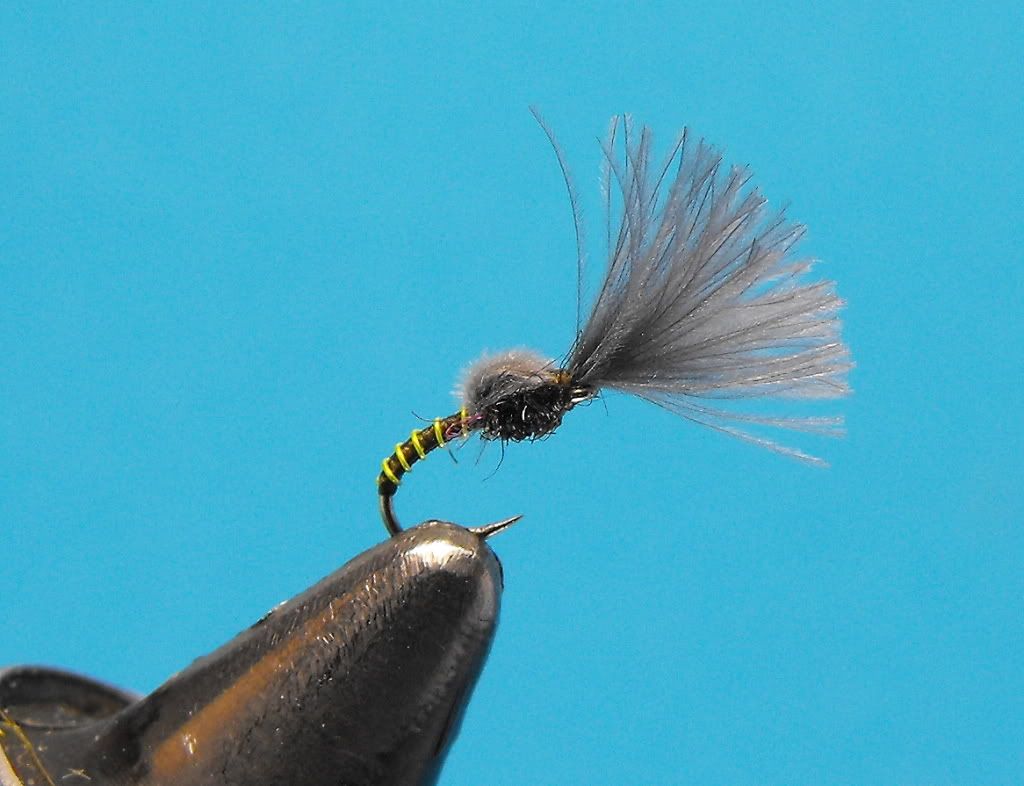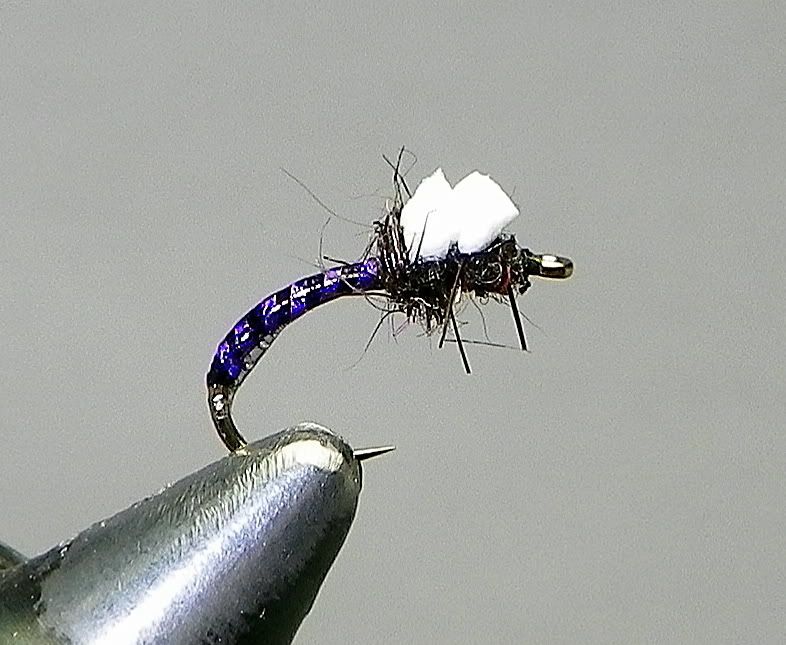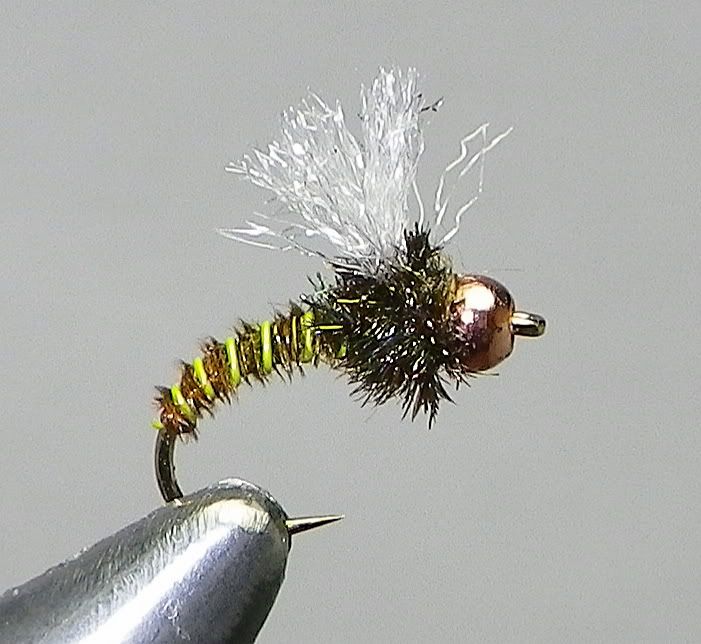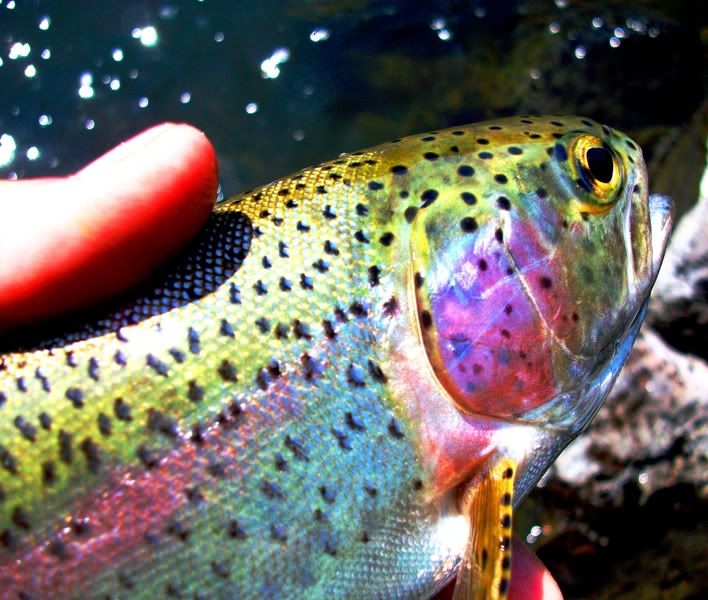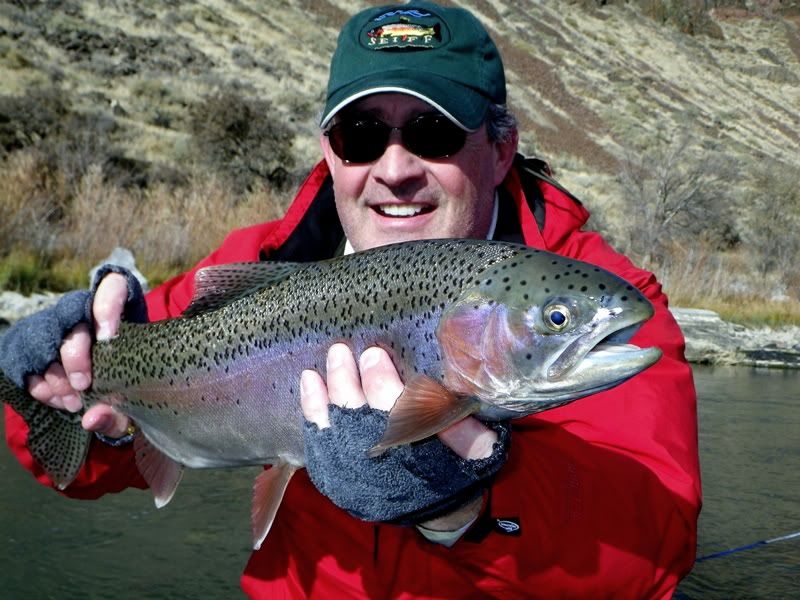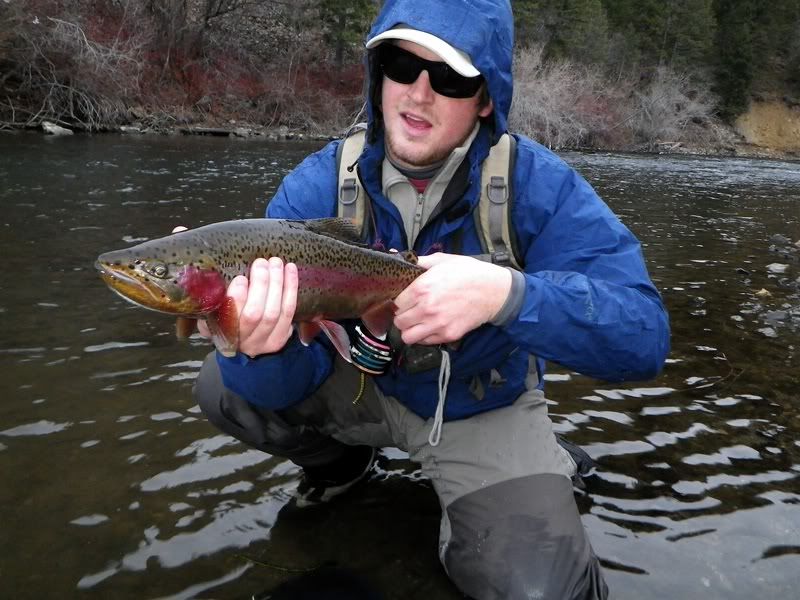With the exception of the Griffith's Gnat the other flies suggested would most likely not represent anything hatching during winter months, although they would be an excellent choice for floatation and as an easily spotted indicator to suspend either another dry dropper or a nymph setup.
The Griffith's Gnat is one I use when trailing a smaller dry or emerger pattern and works very well.
When looking at an indicator fly I usually choose something that represents whatever insects may be hatching at the time. In the summer months I love a Hopper/dropper combo, early and late season I prefer a Parachute Adams as an indicator fly (which also works well in the winter when BWO's are popping off.
But, my all-time favorite winter indicator fly has to be Schollmeyer's Parasol Emerger. I use it year 'round in my favorite spring creek as an indicator fly to suspend a double nymph rig or a dry dropper.
My favorite place to fish in the winter is Idaho's Big Lost River and a Parasol Emerger trailed by either a midge emerger in the film or a suspended midge pupa just under the film does the trick on most days.
The flies are easy to tie and you can tie them in a variety of patterns depending on what insects are hatching at the time.
Here are a few samples of ties I use as a dry indicator:
Pheasant-tail
Soft Hackle
Generic Midge:
And here are some of the flies I trail behind or under the indicator:
Smoke Jumper midge:
KG's EPF Midge:
Deep Purple Peril Midge:
Zebra midge:
Improved Shop Vac:
And, it must work because here is what we catch:
You may have seen this one on the cover of your latest issue of Flyfishing & Tying Journal :icon_wink
I guess the key is experimenting with a variety of options and find what works best for you. This method has proven very effective for a lot of years and we use it consistently.
Good luck in your search and best of luck in your success.
Best Fishes,
Kelly.






